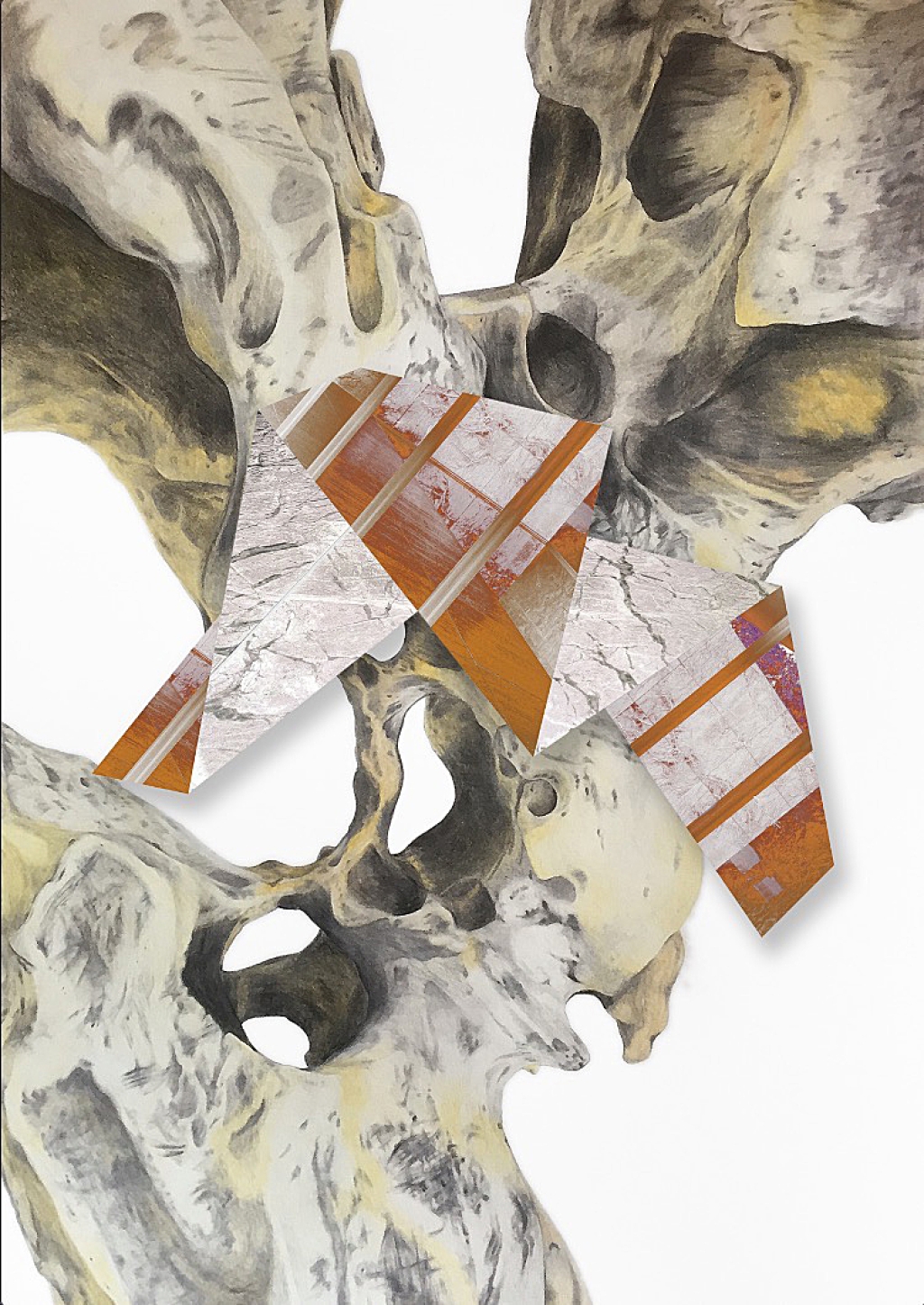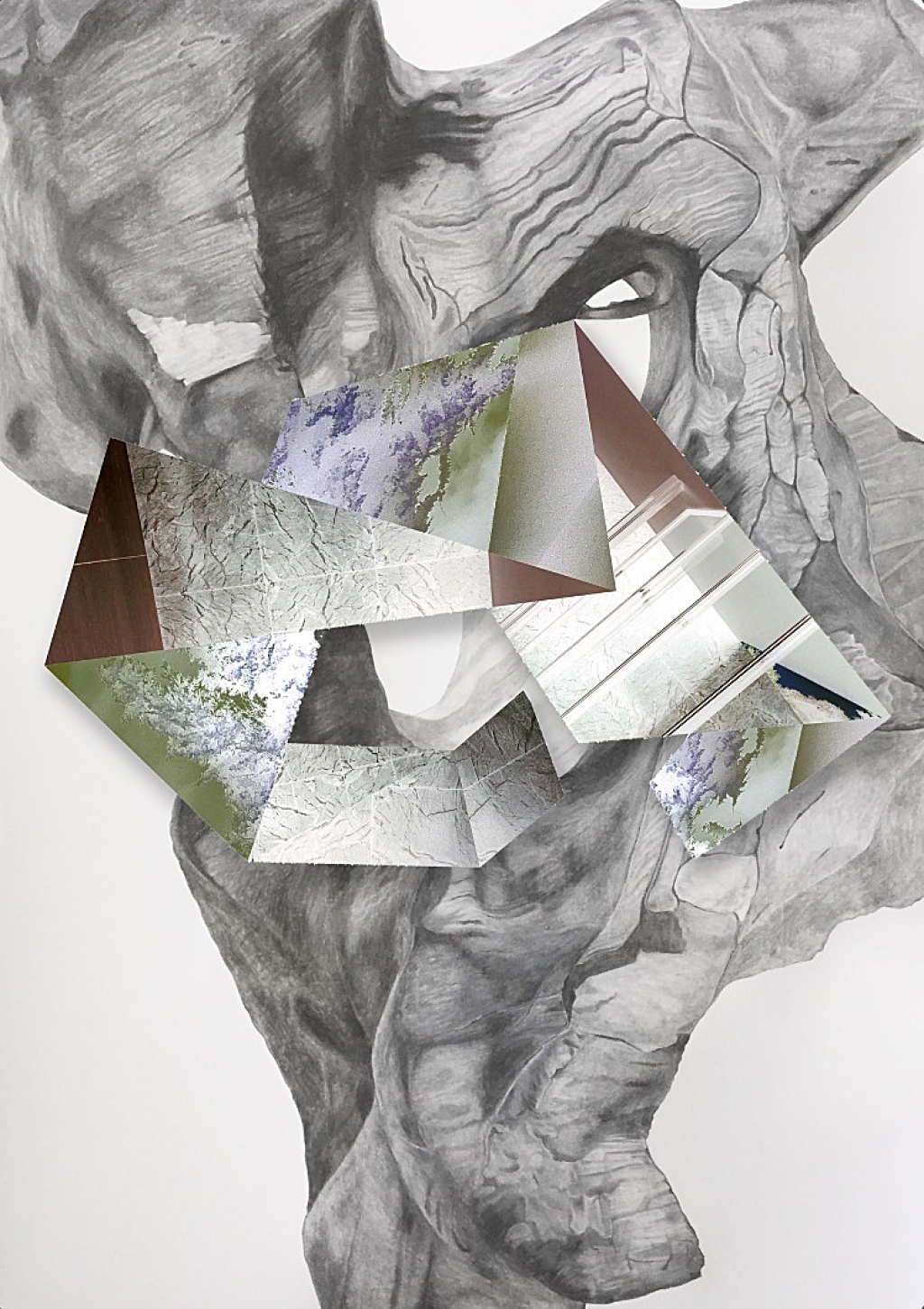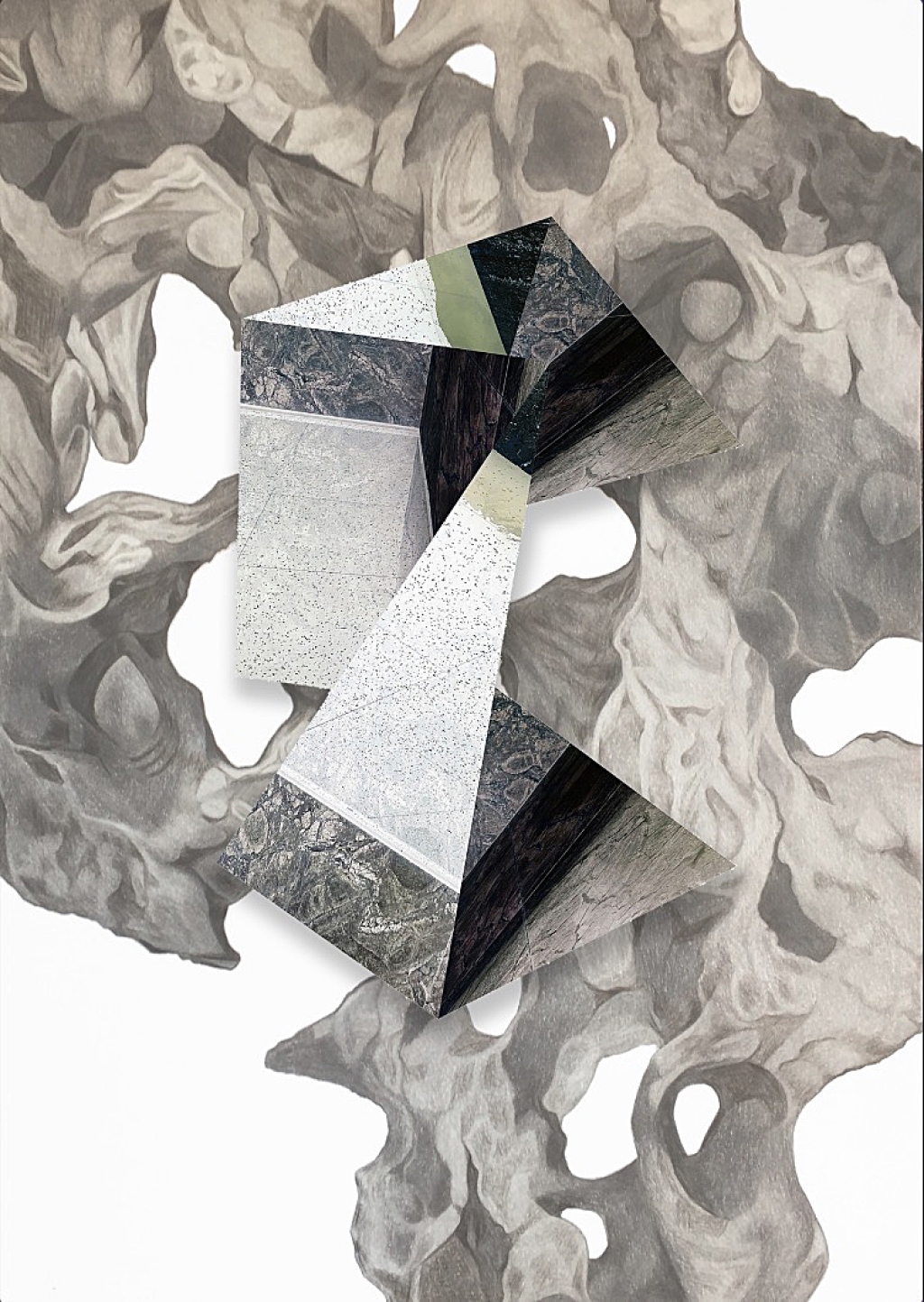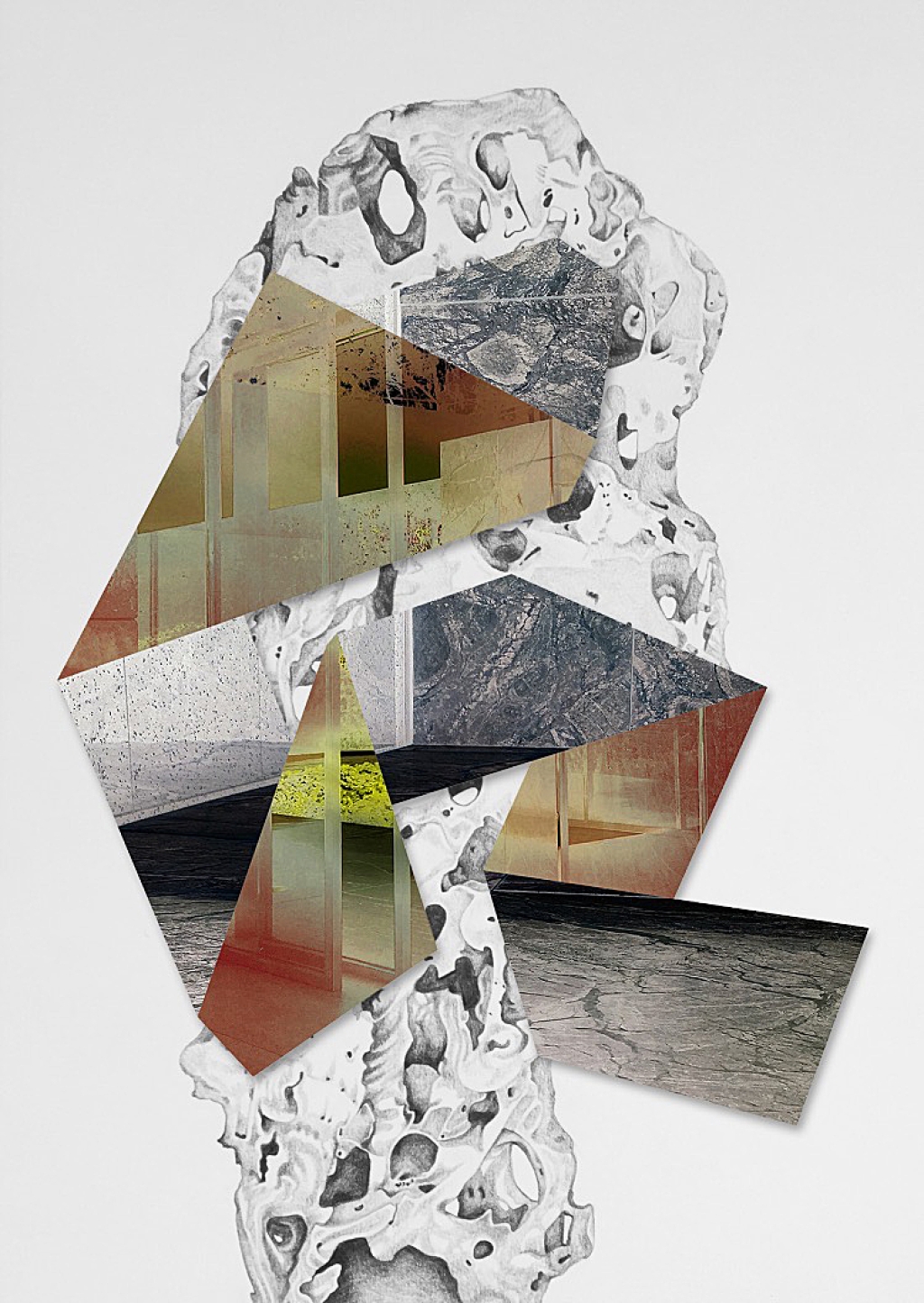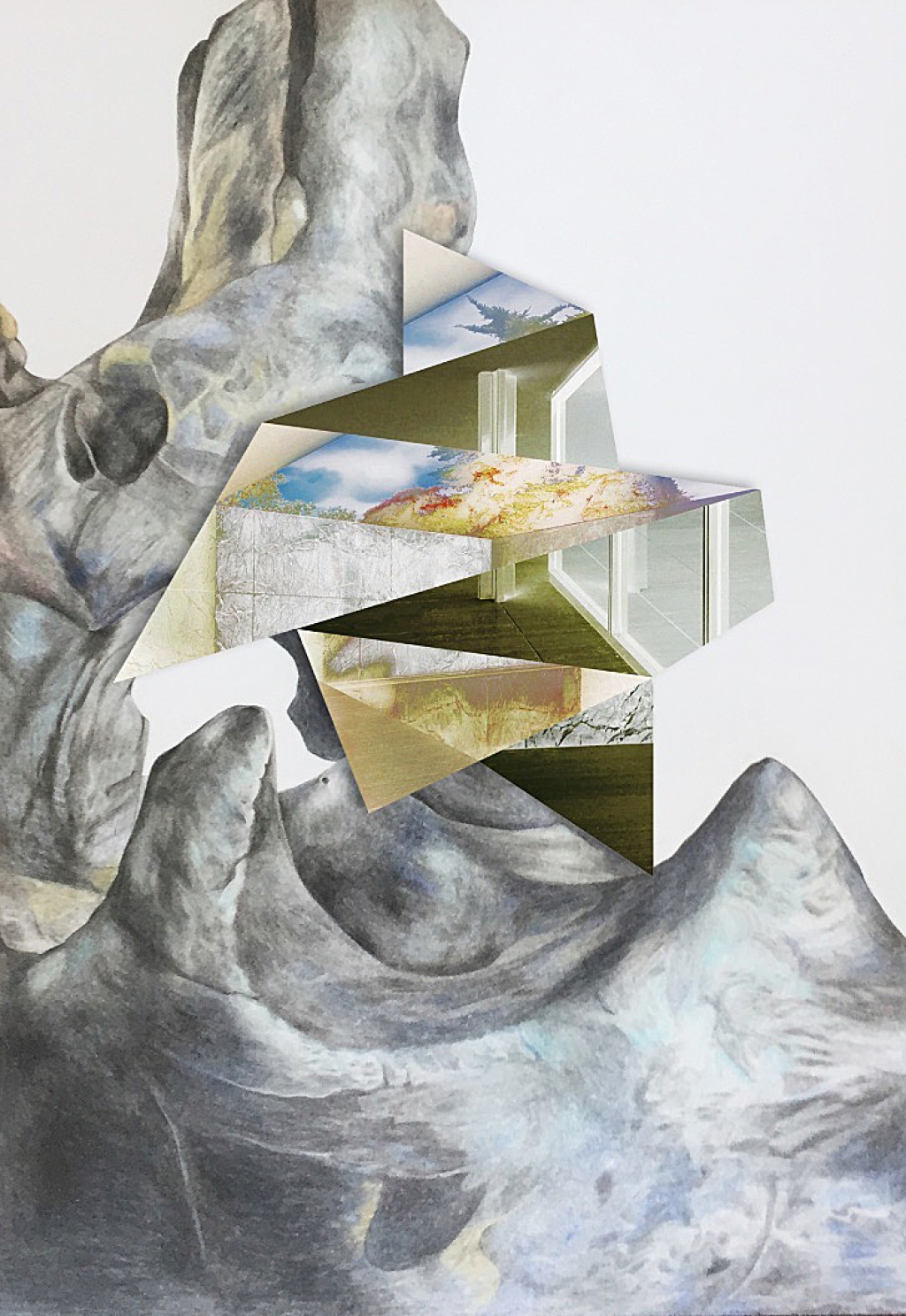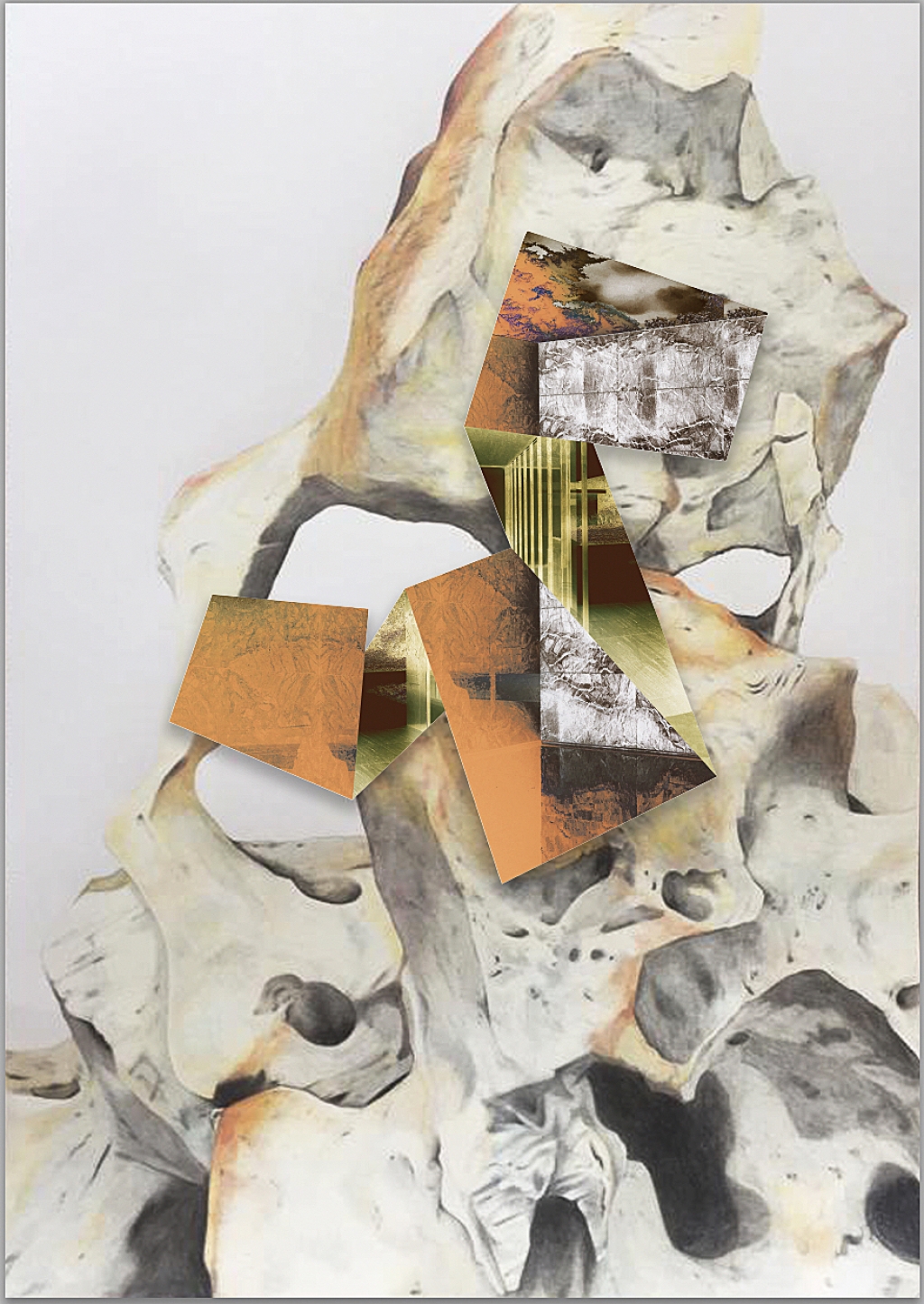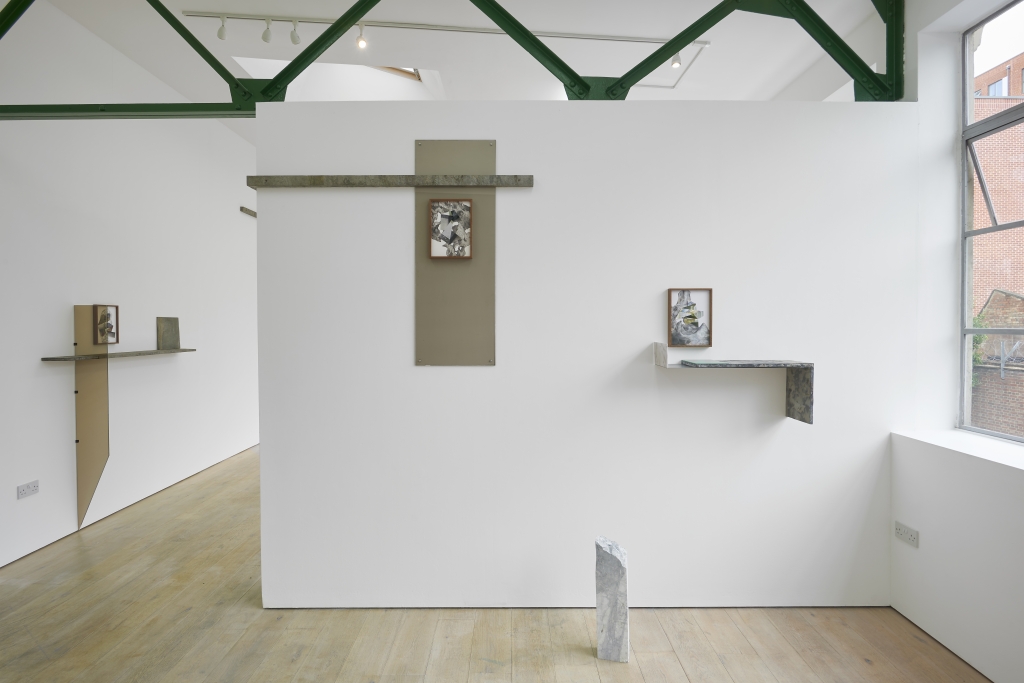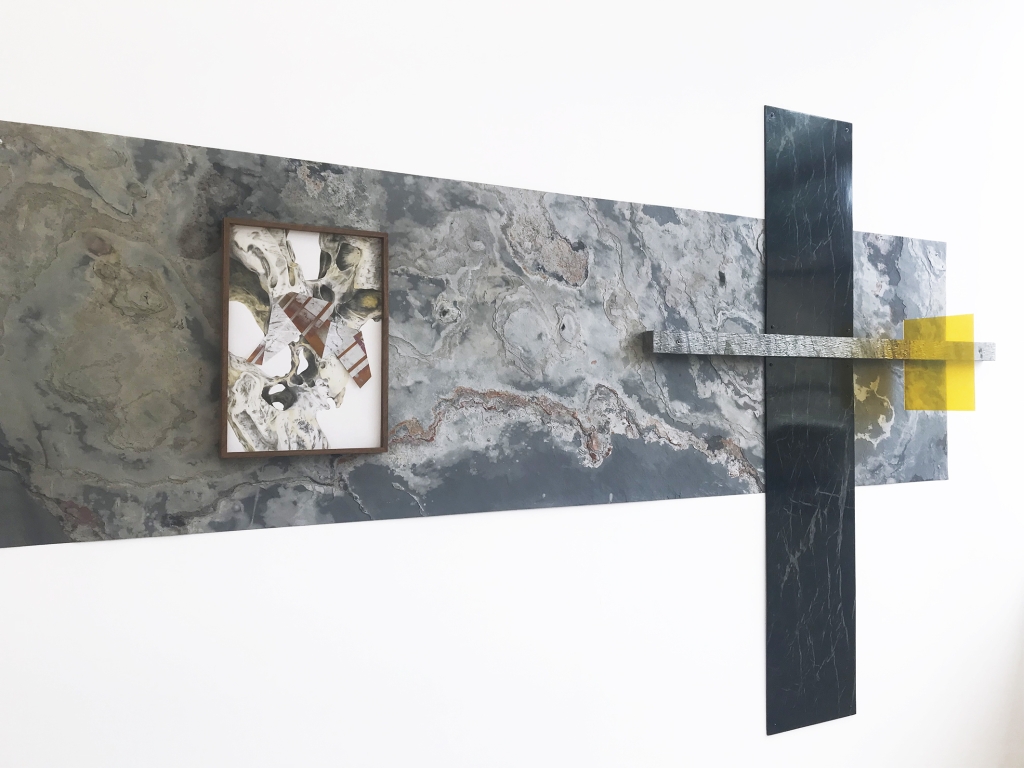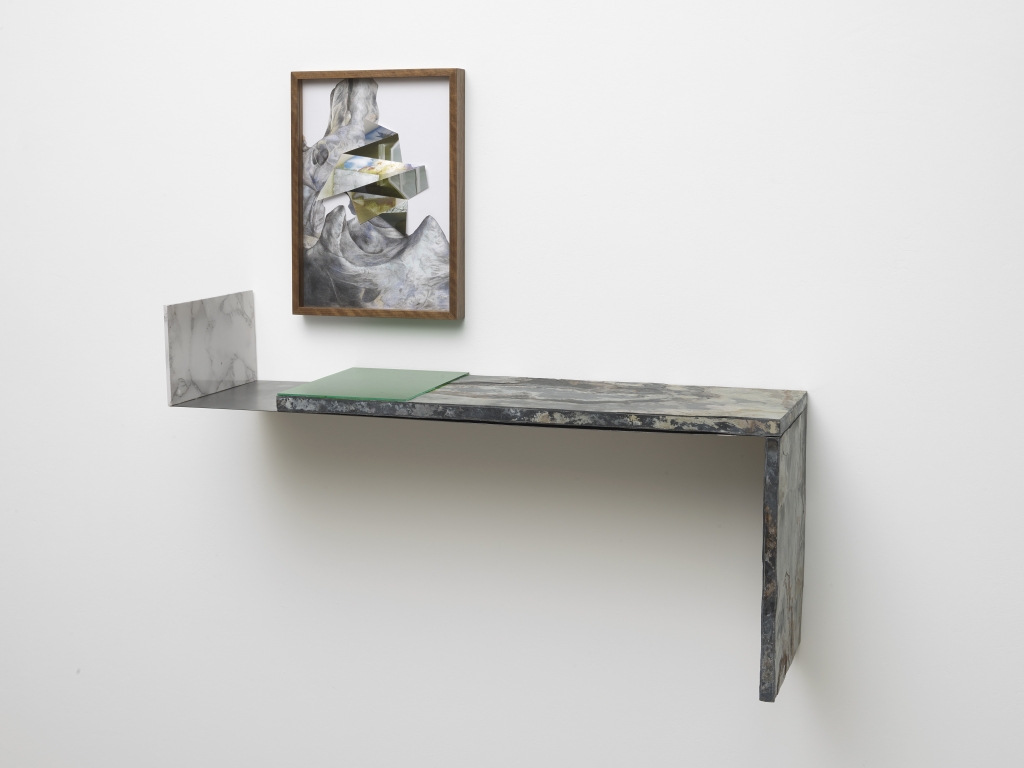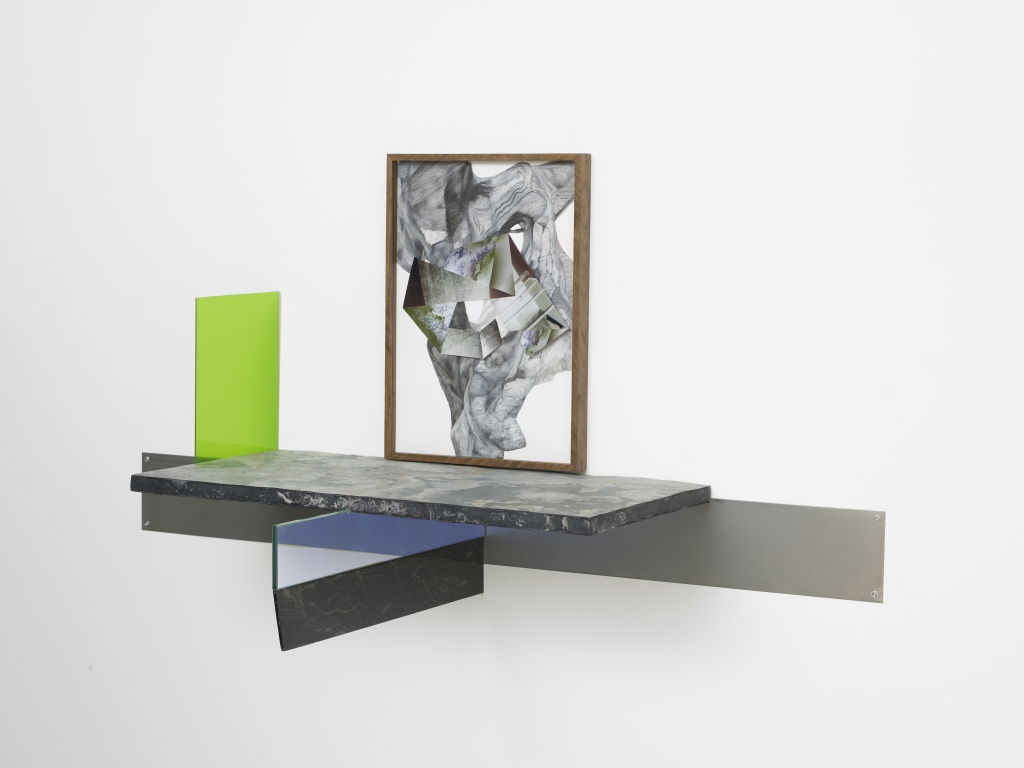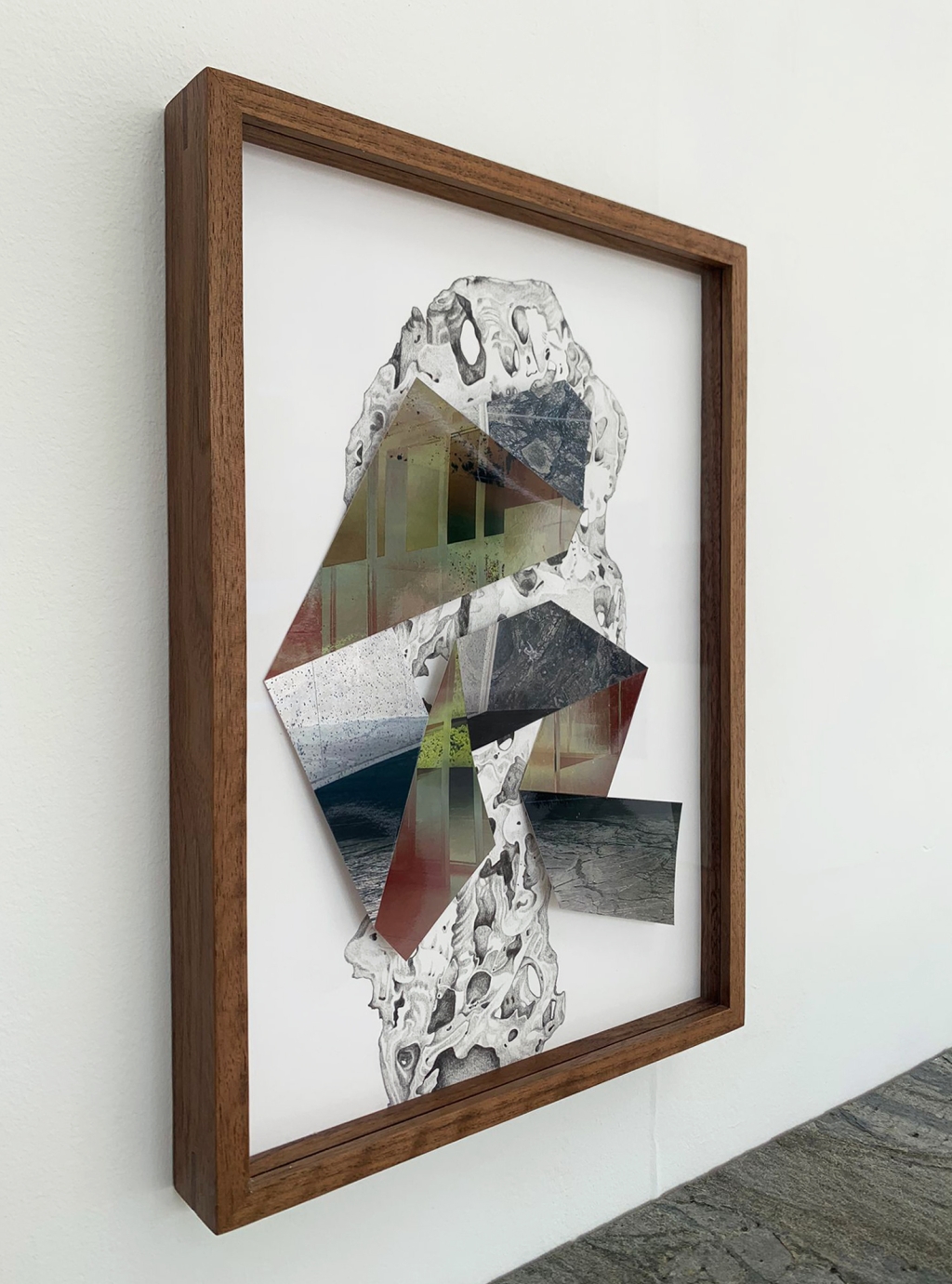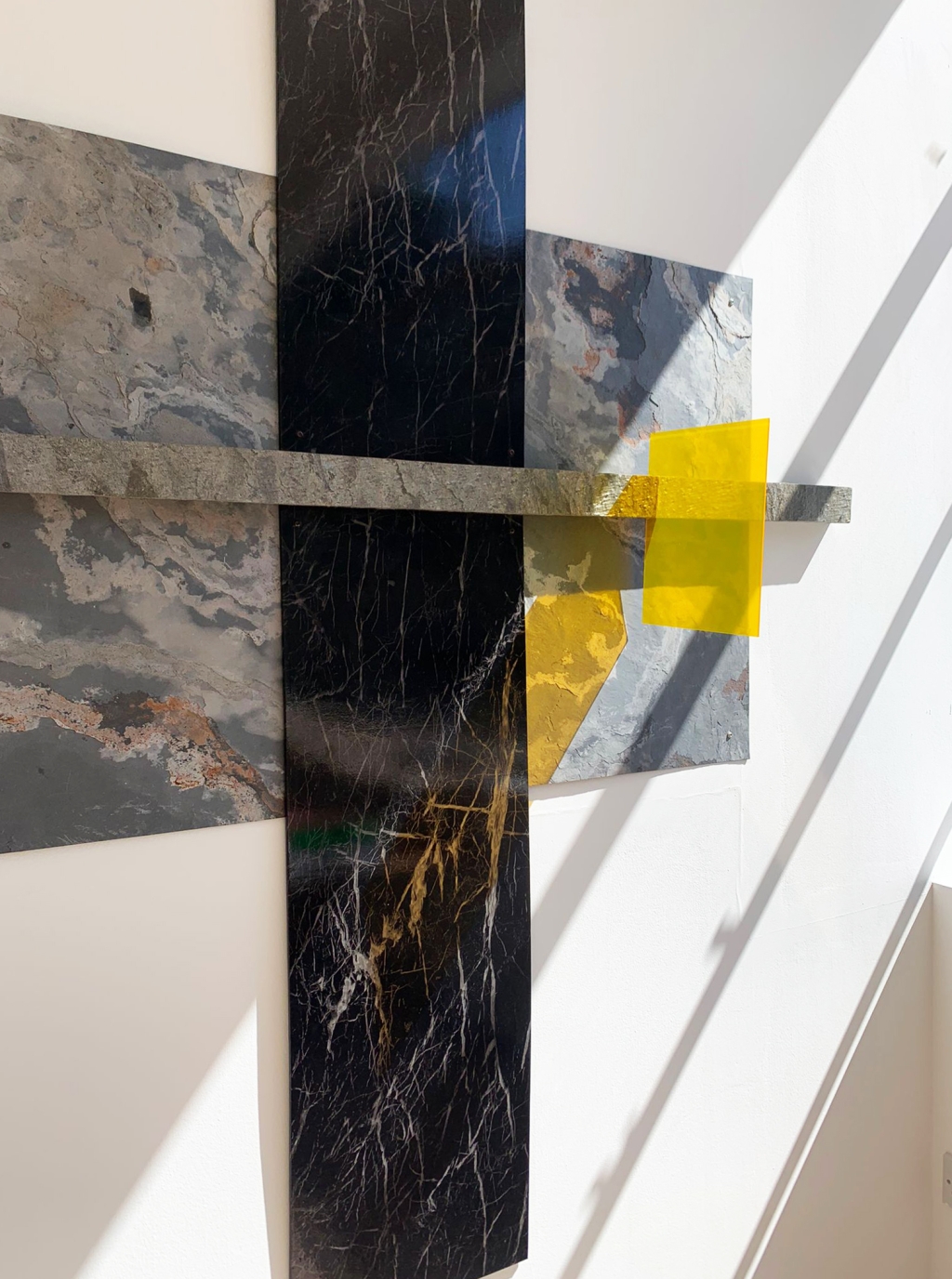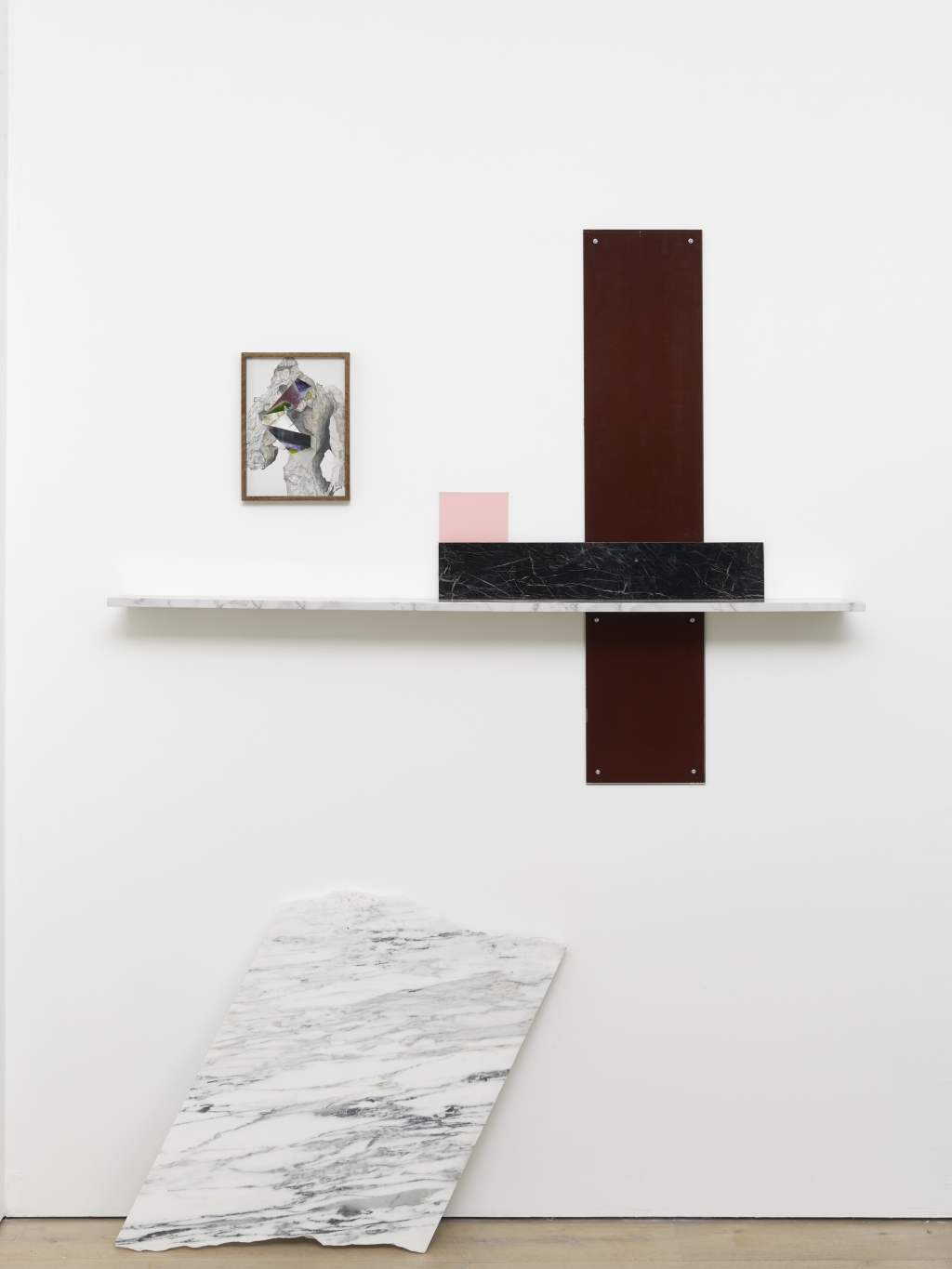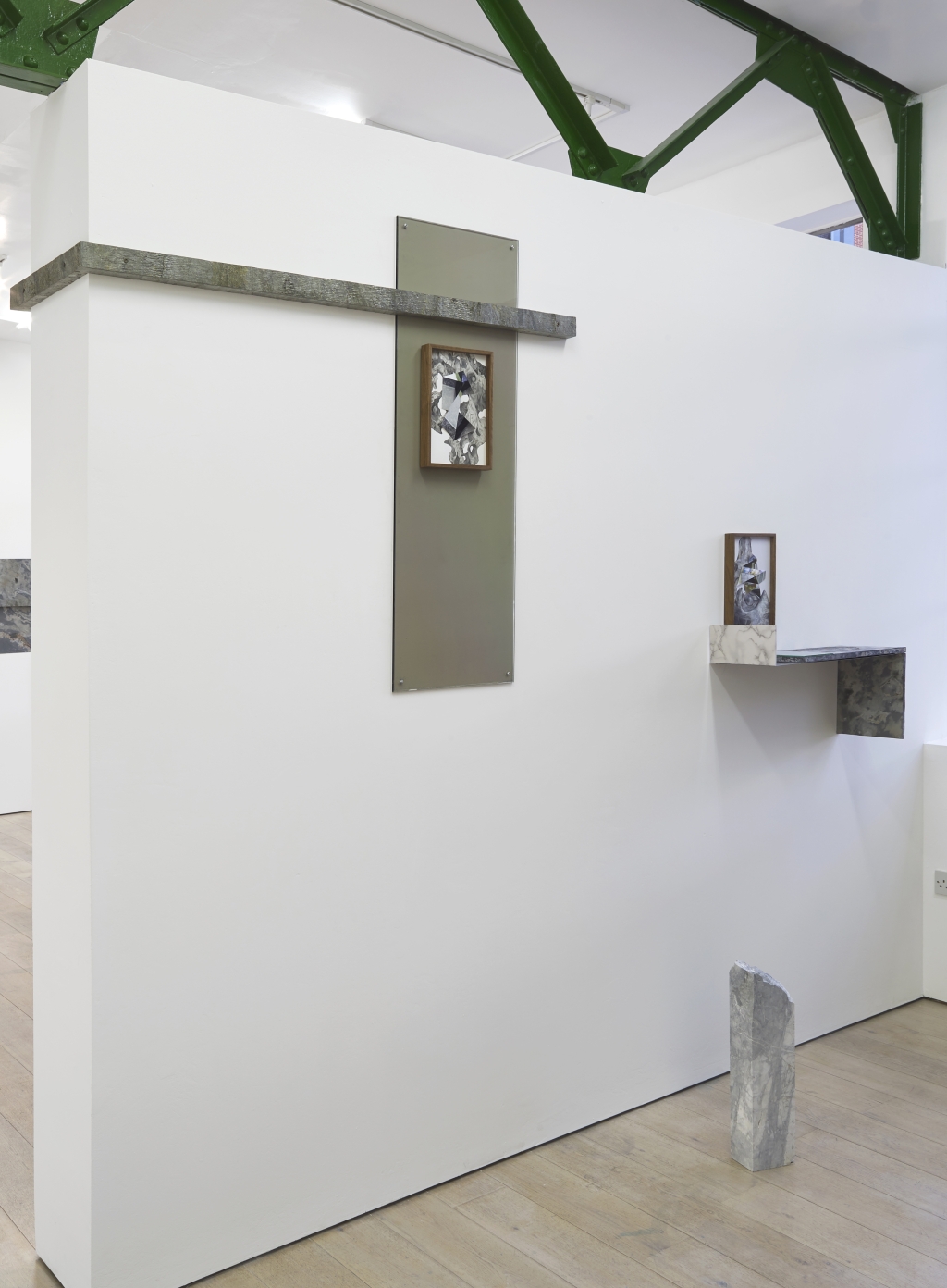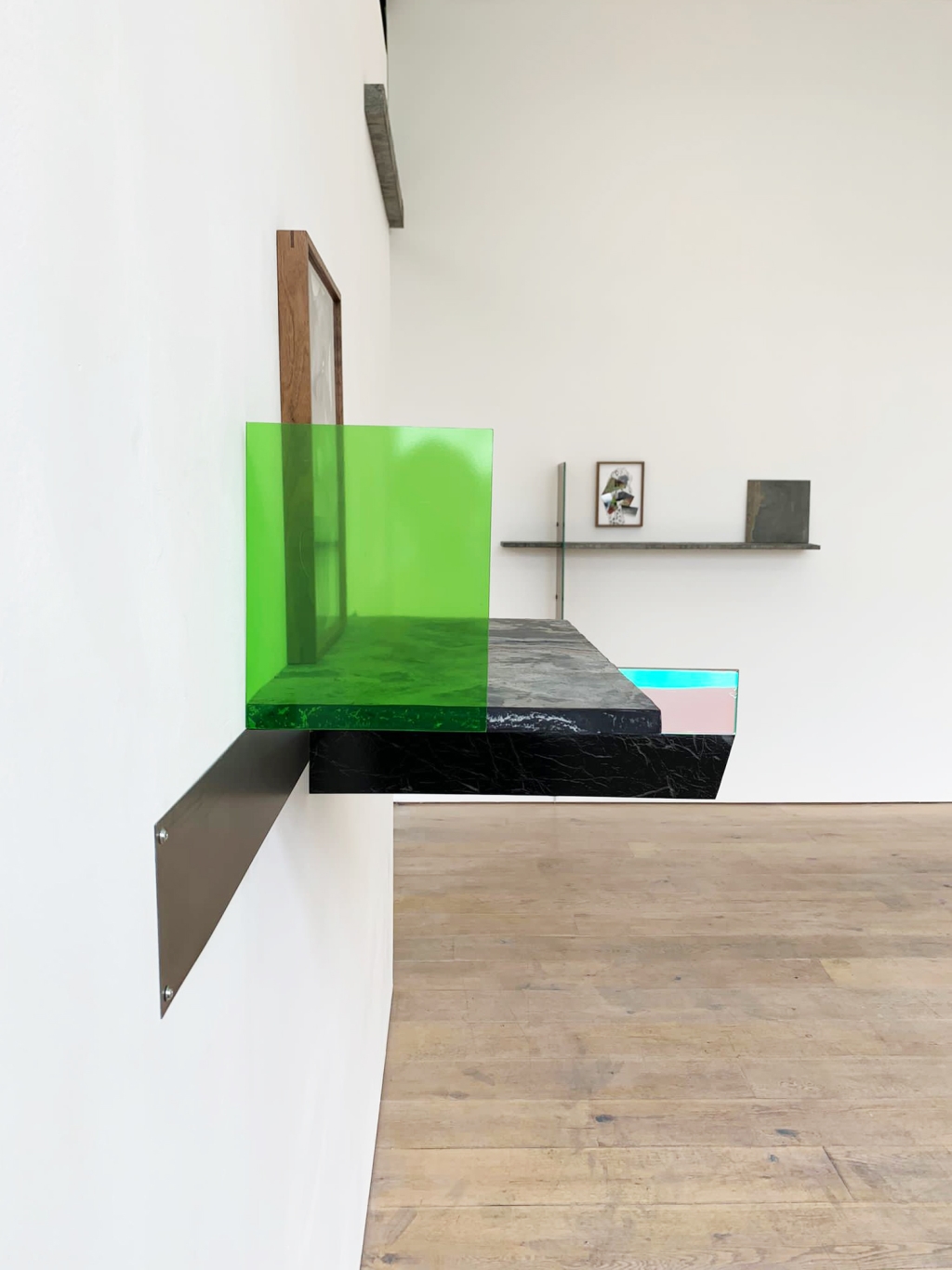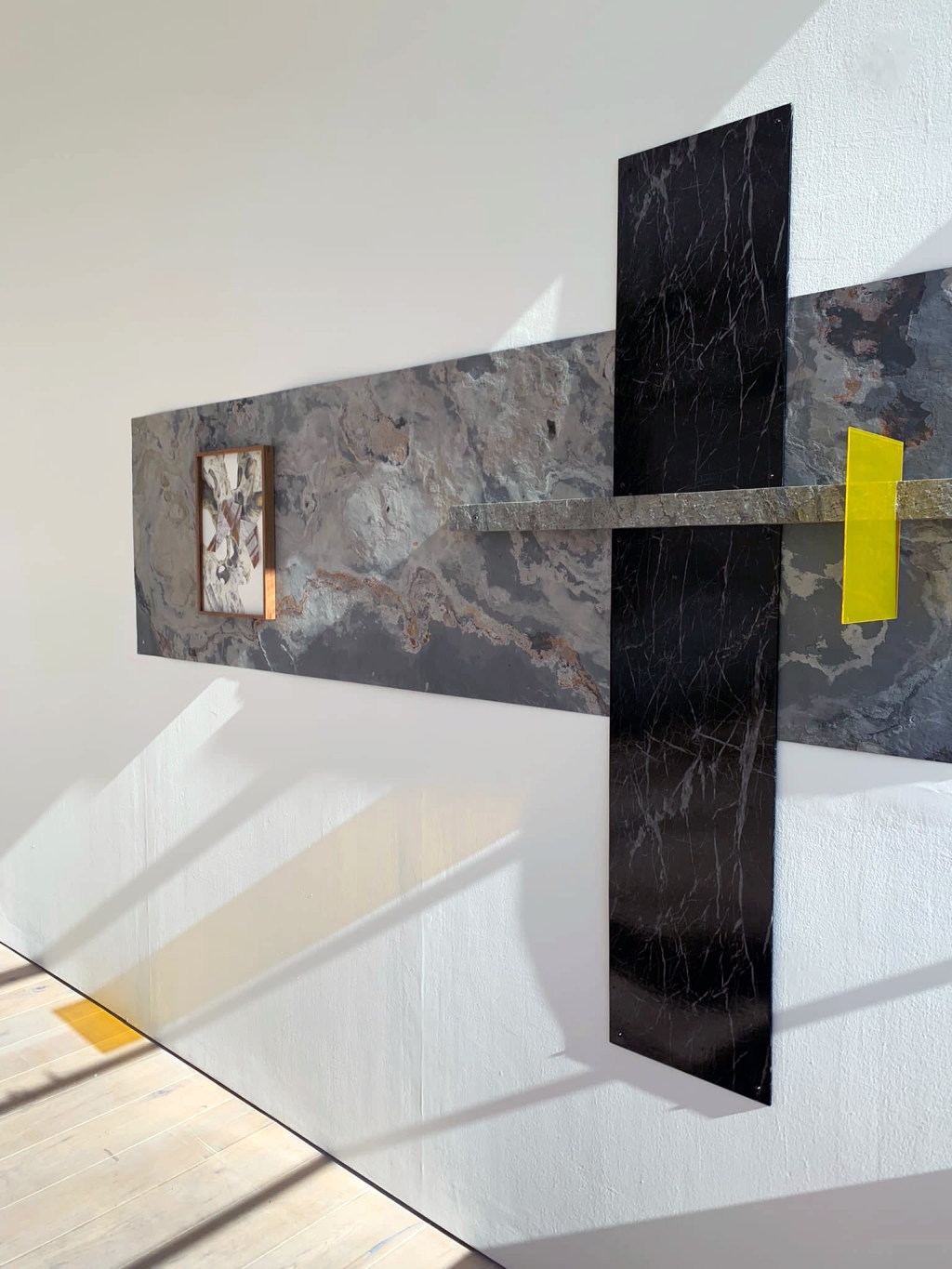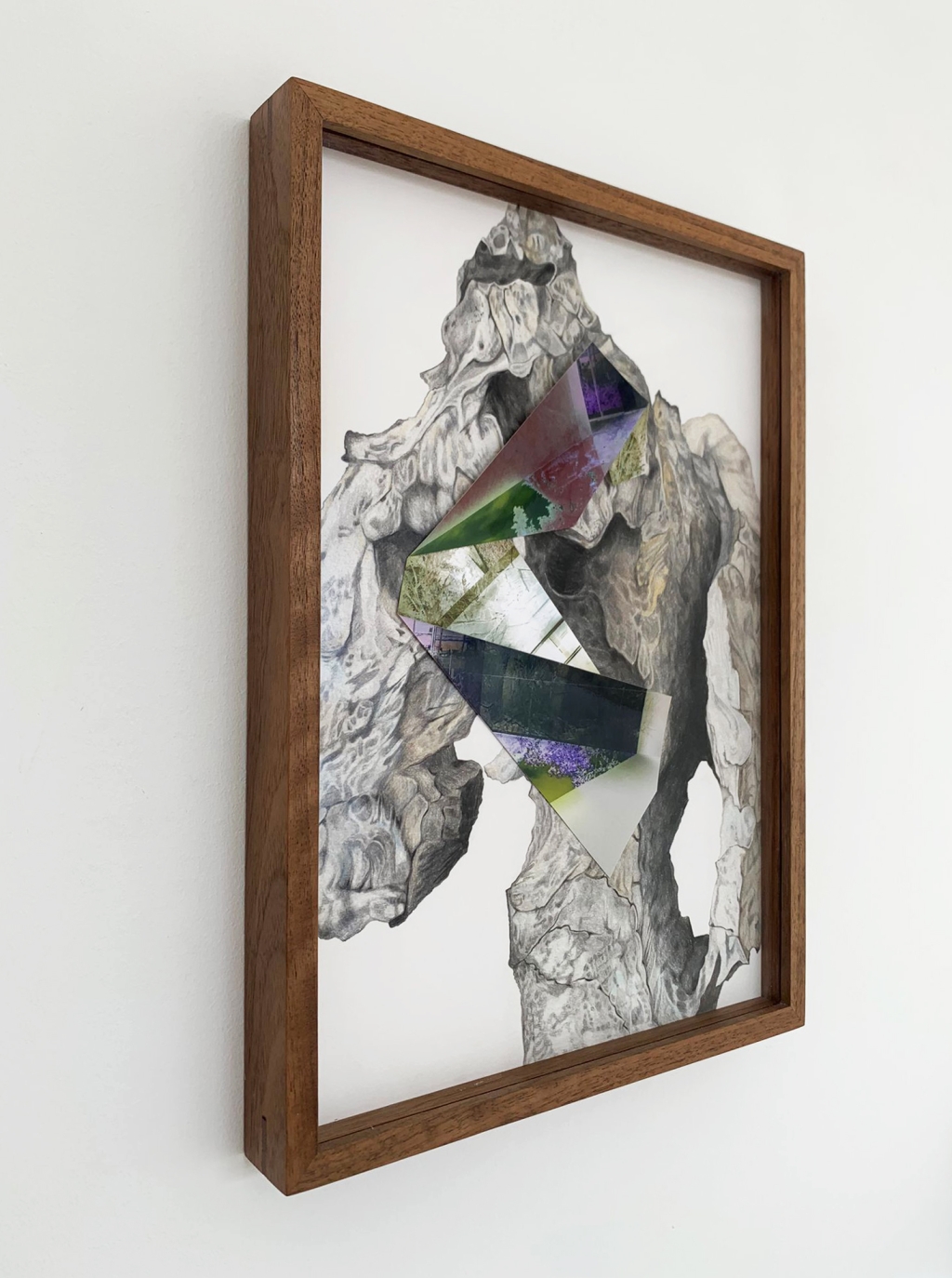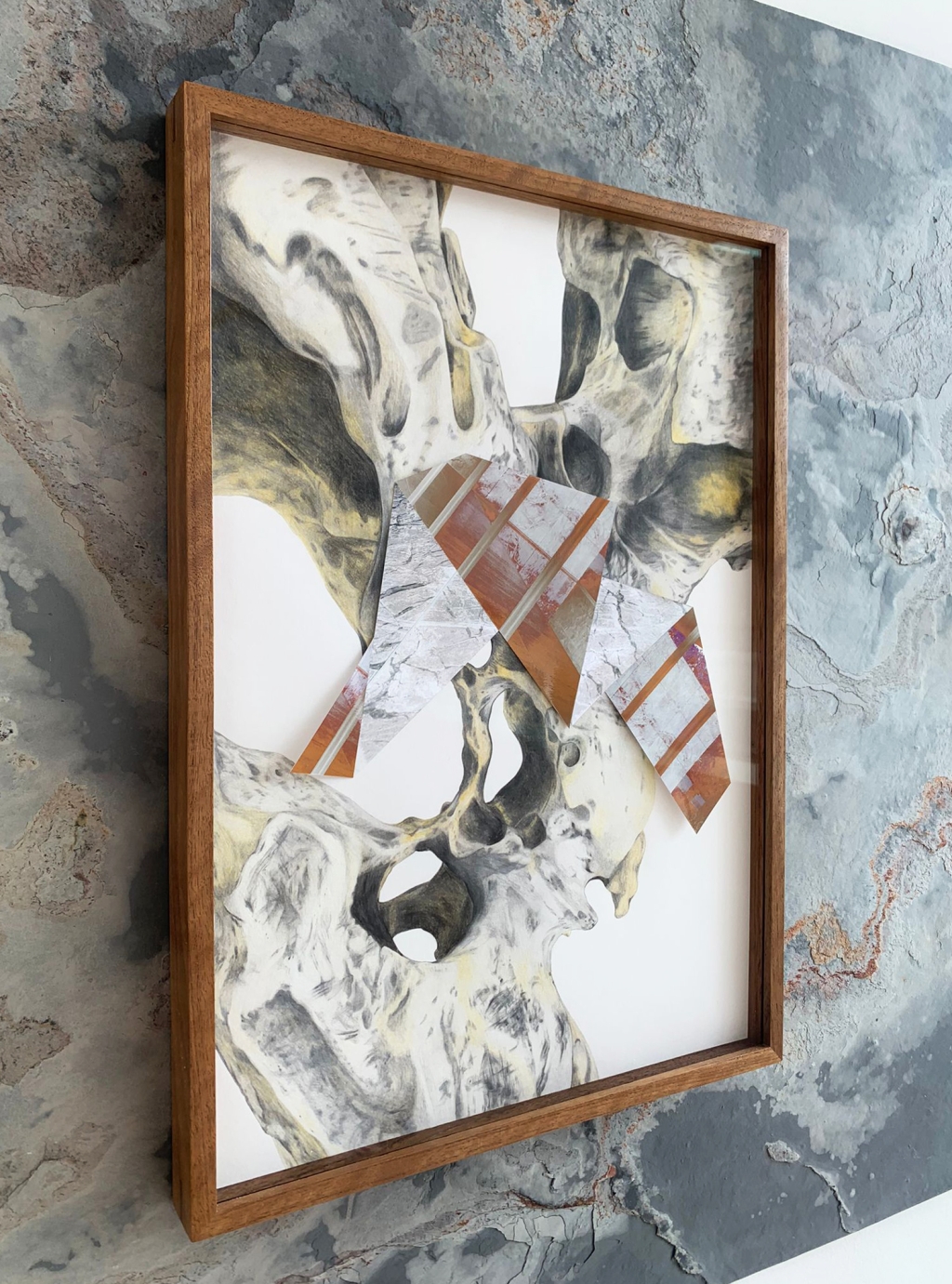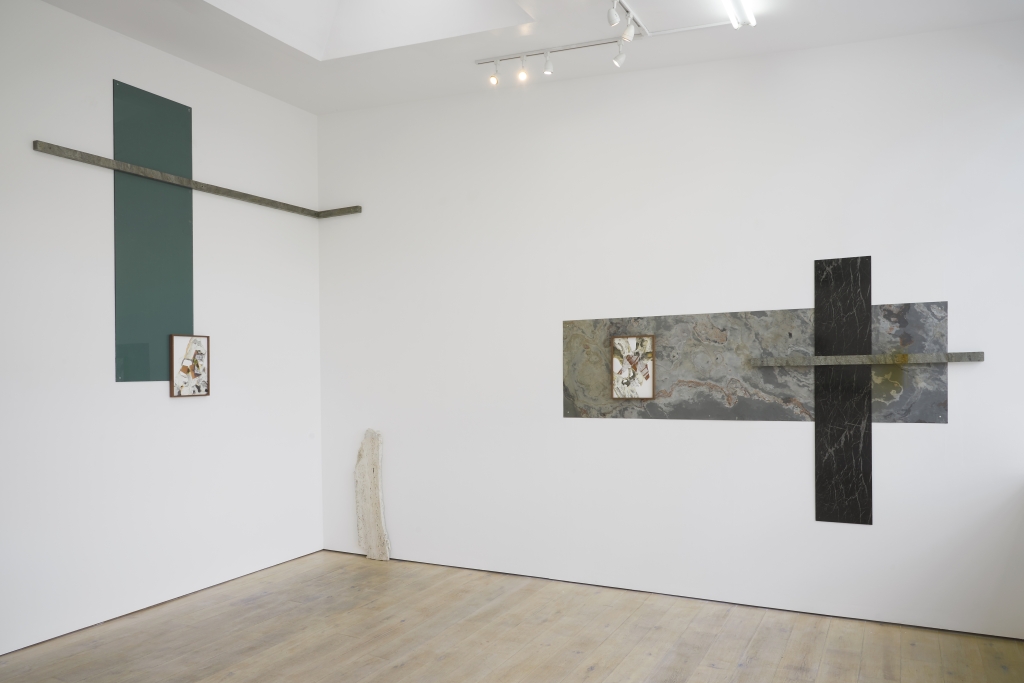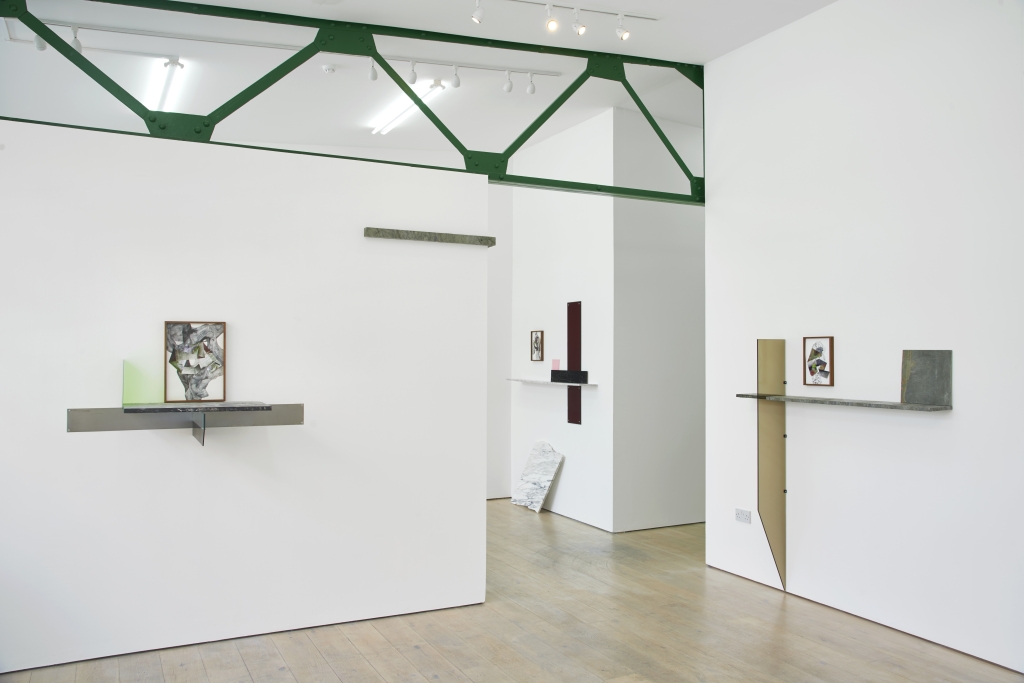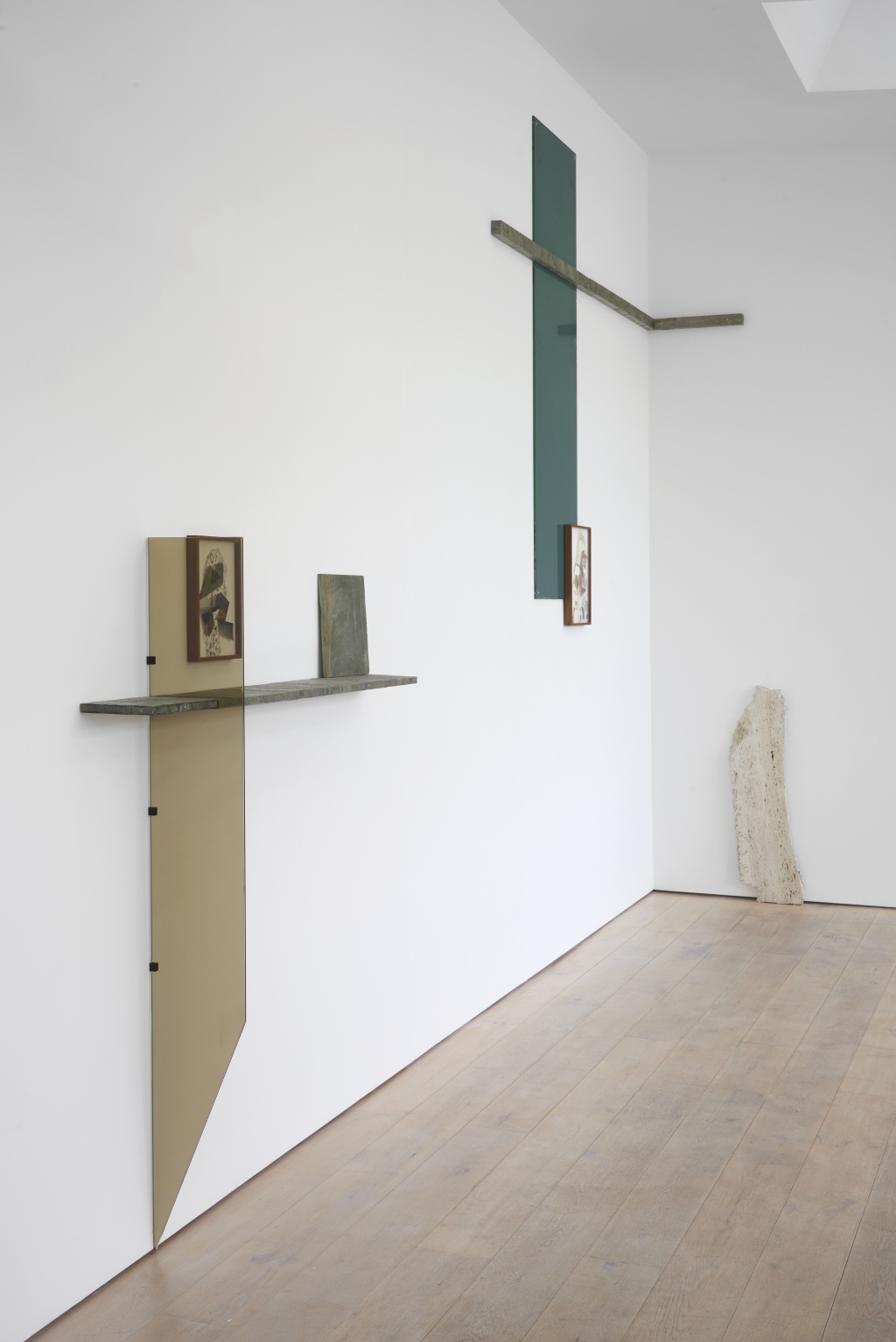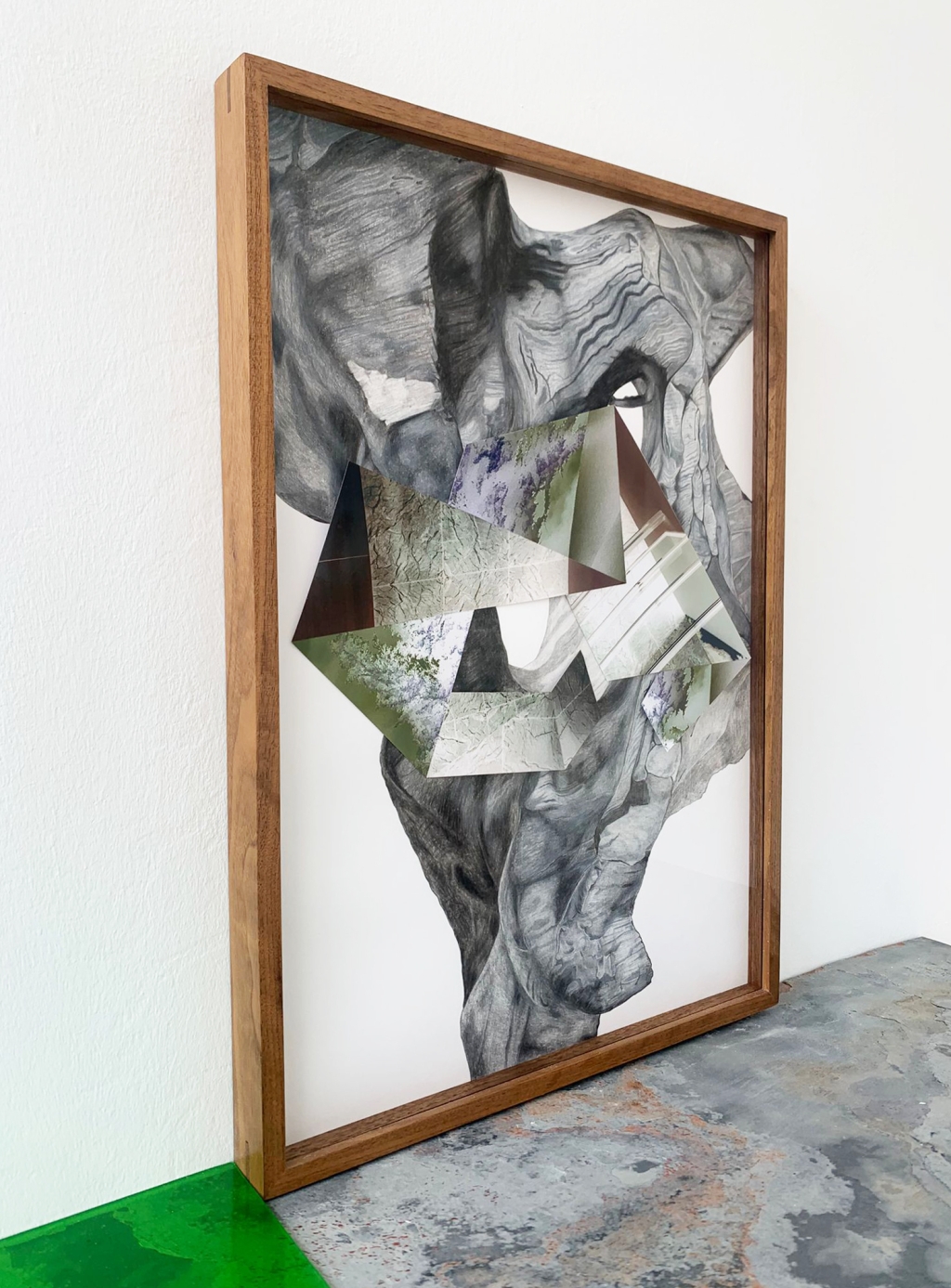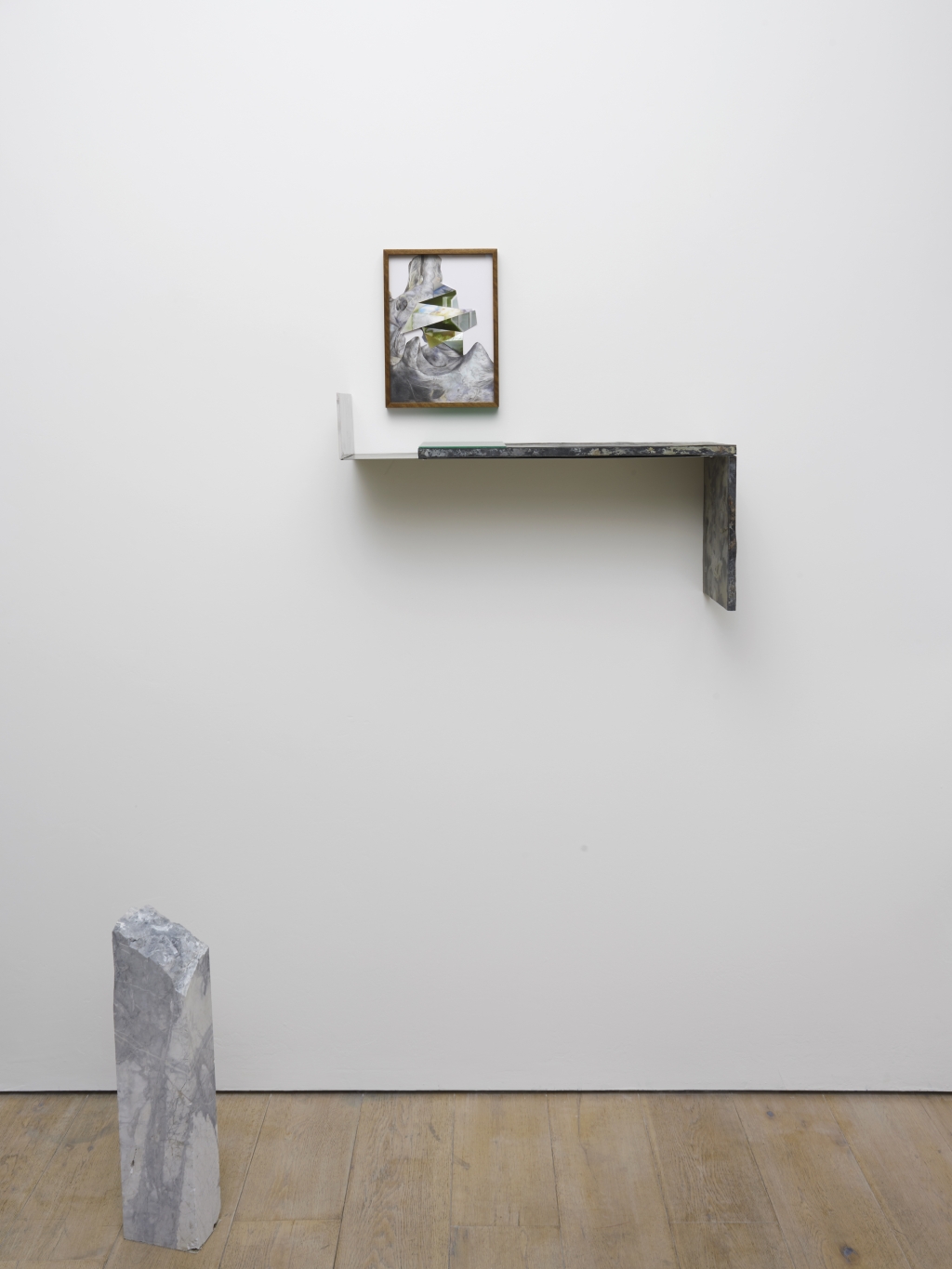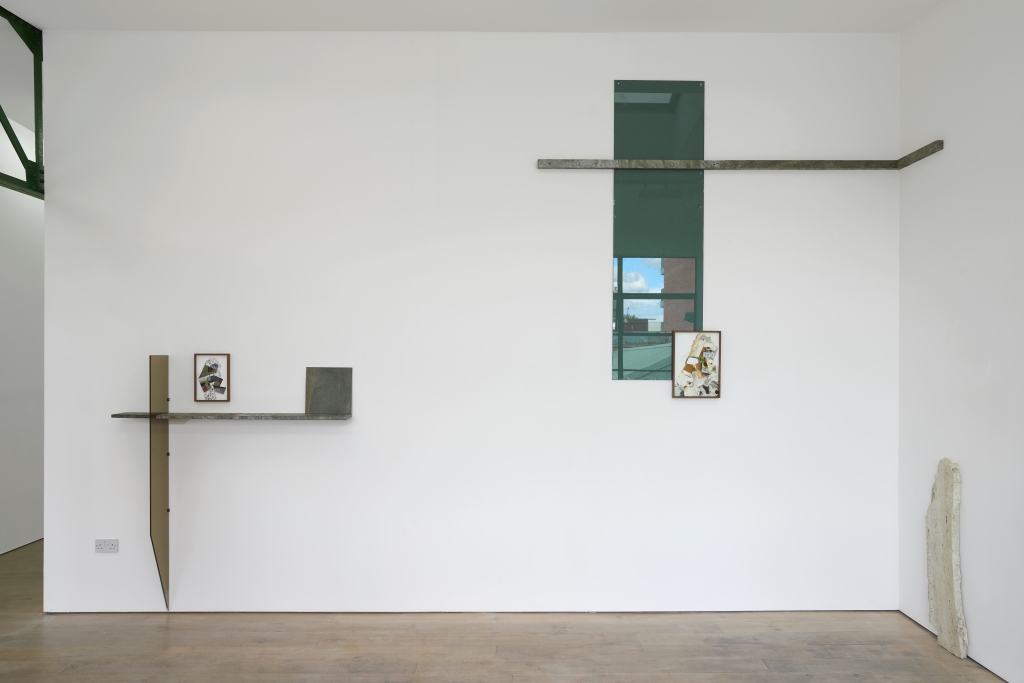A Scholar's Rock
A Scholar’s Rock explores The Barcelona Pavilion, designed by Ludwig Mies van der Rohe in 1929. The Barcelona Pavilion was the German Pavilion for the 1929 International World Exhibition in Barcelona. After the closure of the Exhibition, the Pavilion was disassembled in 1930. Between 1983 and 1986, a group of Catalan architects reconstructed the pavilion permanently, based on historical drawings and rediscovered footings on the site.
It is an important building in the history of Modern architecture, known for its simple form and its innovative construction, particularly using glass and steel. A Scholar’s Rock engages with dimensionality that allows the building to be seen and interpreted in multiply ways: from every other point of view, the building looks like something different. Klenz' work distorts, multiplies and inverts the viewer’s conception of space, leading him/her into a palace of illusion in which the depth of spaces is as hard to gauge.
In her representation of the pavilion, the building is represented as an open-ended form in a state of perpetual becoming. The hard edges of the architectural structure fade into gradations of light: asymmetry and delicately broken horizons offer a different idea to the inflexible grid like structure and perfect order of the building itself.
The various photographs are presented as folded objects on pencil drawings of studies of various scholars’ rocks. Like the pavilion itself, the photographic folded objects shift in appearance depending on the viewer’s perspective. Each folded photographs becomes a baffling conundrum or kaleidoscopic merry-go-round: a transmutation of two dimensions back into three, from flat photograph into a folded, fragmented sculptures.
The works refer to scholars’ rocks by using pencil drawing studies of various scholars’ rocks as the backdrop of the folded photograph. A Scholar’s Rock functions as “vessels of modern fantasy and imagination” (Craig Clunas) suggesting plants, rocks, bodies, flames and mountains. They existed in nature before they became prized objects collected by museums and individuals. The pleasure of studying a scholar’s rock is given by their presence, the endless variety of their surfaces, the mystery of their holes, quasi-architectural and quasi-somatic quality, the logic of their vertical joints and horizontal strata, the dynamism of their alternating expansions and recessions. The challenge and gift of a scholar’s rock is to sustain the play between observation and imagination and like Mies van der Rohe’s pavilion itself, a scholar’s rock brings the world into more complex and variable relations.
In an exhibition display, Klenz uses coloured glass, glass shards, steel, marble shelfs that display the work from different angles and actual stone fragments in order to present Mies van der Rohe’s pavilion as ever-changing and ever-evolving. The display echos the pavilion’s endless variety of presence and like a scholar’s rock, the exhibition display creates shadows and shapes and refractions and reflections and presents the work as existing in-between sculpture, drawing, collage, photography and architecture.
